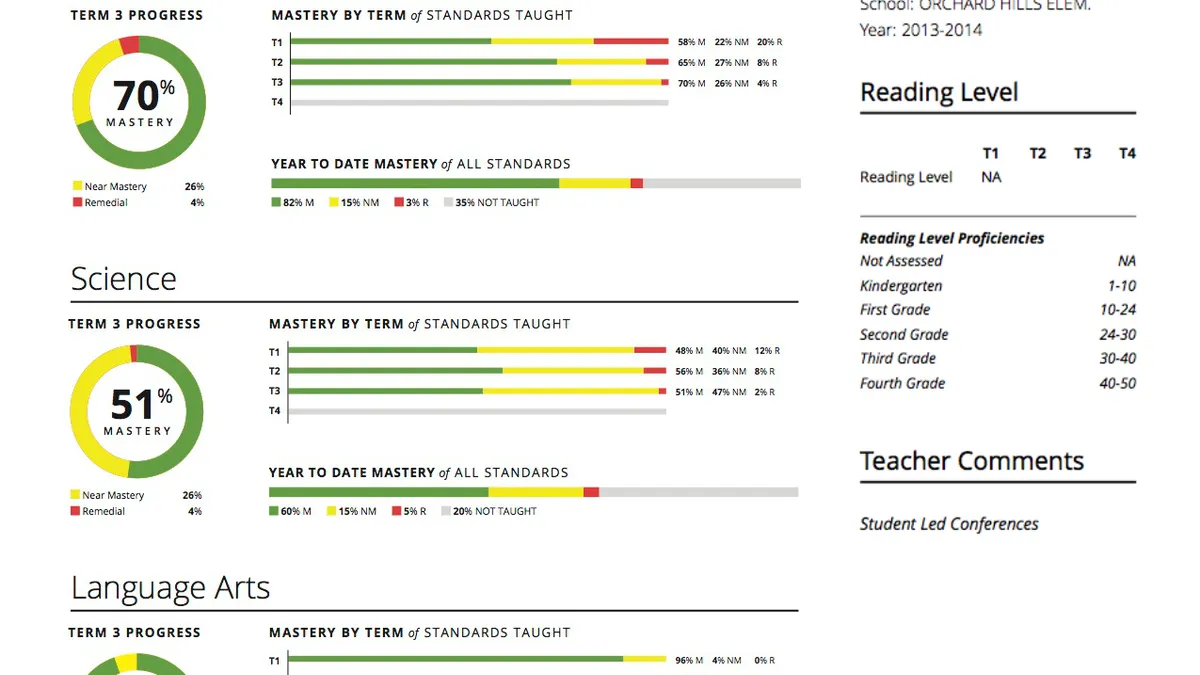Dive Brief:
- The Data Quality Campaign’s latest report, “Show Me the Data: State Report Cards Must Answer Questions and Inform Action,” argues states are not making information accessible or easy to understand — something that can change with implementation of the Every Student Succeeds Act.
- Among the key findings of the report are that only four states meet all No Child Left Behind reporting requirements in their latest report cards, 10 use outdated assessment data from the 2012-13 or 2013-14 school year, 45 produce report cards in English only and offer no translation options, and it takes three or more clicks to get from search engine results to report card pages in 18 states.
- The language on these report cards is also jargon-heavy and hard to understand, but the Data Quality Campaign released four policy priorities in October that can guide report card redesigns under ESSA.
Dive Insight:
State education officials should be seeking input from parents and other community stakeholders as they develop new report cards to meet the requirements of ESSA. School district administrators can help get some of that feedback to the state and make sure their voices are heard in the planning process.
One important change in reporting requirements in ESSA is that states will have to report per-pupil spending data at the school level. Under No Child Left Behind, that was reported at the district level only. Among other things, this change will make very clear where spending disparities are within districts. Administrators should be prepared for what that data will show in their own communities.







 Dive Awards
Dive Awards





